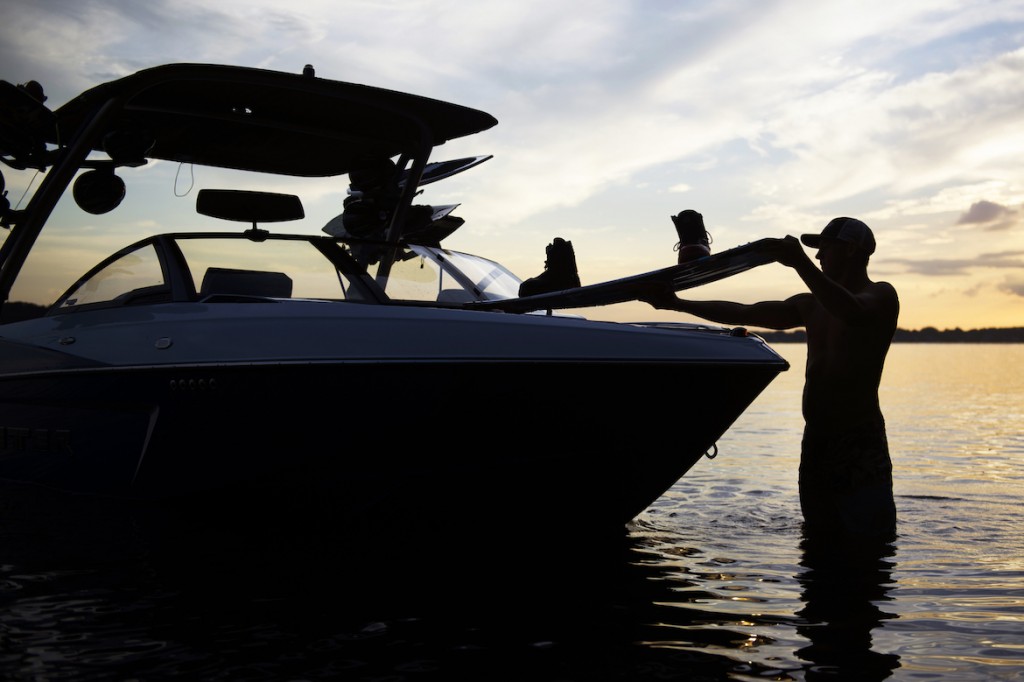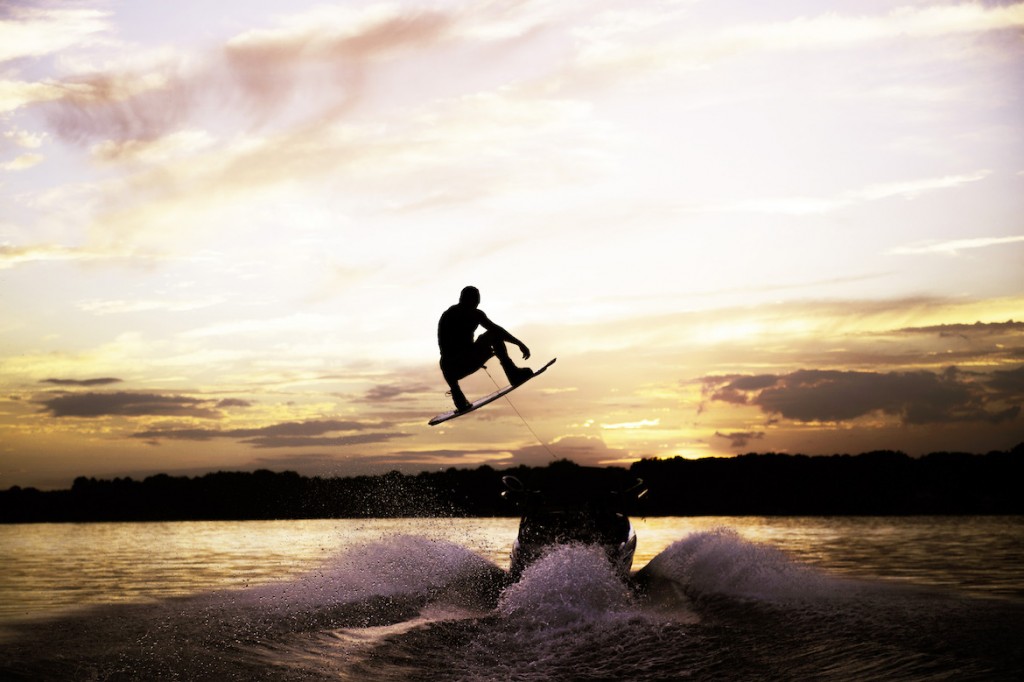Meeting a professional—someone who’s poured hours and hours of their life into mastery of a singular thing—is always a little intimidating. Meeting one who enjoys spinning and flipping through fresh water at high speeds…well, that kind of person, in particular, is sure to be way too cool for me.
Or so I figure, as I stumble over creaky boards to meet wakeboarding phenomenon Stephen Pierce at the end of his Lake Norman dock. With the reckless-looking leap of someone who’s uncommonly accustomed to stepping between rocking boat and solid ground, Stephen disembarks a bright green Malibu Wakesetter, an older skiff bobbing opposite a sleek blue boat which is obviously the newer model. The 2017 beauty, its spotless housing shiny and reflective, looks like it absolutely belongs in a luxury lifestyle magazine, but I’m far more interested in the weathered old green one. This 2007-made vessel has a story, and that story is a shared one.
25-year-old Stephen Pierce started wakeboarding at 14, using the green boat that’s now roaring beneath my feet, careening around the warm summer waters of the lake. We’re in his element now, and it couldn’t be more obvious. I’ve never seen someone so stoked to get out of a luxurious Malibu boat. In the decade since his start, Stephen has prevailed in the North Carolina wakeboarding scene, earning himself several significant sponsorships, including Liquid Force wakeboards and Malibu Boats. He didn’t start on the boat, though. He started on a trampoline.
“Bouncing around on that thing teaches me to know where I am in the air,” Stephen explains, minutes after performing a blind landing—meaning he hit the water with his back to his tow boat.
About a quarter of Stephen’s training hours are spent bouncing rather than riding. With one wipeout-defying stunt after another, it’s clear he has a sense for where he is and where he’s going in the air, but he tells me the first step to mastering this sport is knowing where you’re going in the water. To use the wake, you first have to understand the wake.
Luckily for me and other lake laymen—I basically just see water moving around the way water does—Stephen has a knack for explaining what that means: He runs his own Lake Norman wakeboarding school in the summer. The nature of the water patterns thrown by your boat—edging in and out of that trail to learn how wake interacts with board—is wakeboarding 101. In his lessons to aspiring watersport young ’uns, it’s the first thing he teaches…after they’ve learned to get up onto their boards, that is. They’ll learn to jump “wake to wake” before ever attempting a board grab or a spin. Flipping, as well as the combination of these stunts, comes much later. And the key to the whole thing (not so surprisingly, when you think about it) may be the thing linking wakeboarder to Wakesetter.
“The rope is specific to wakeboarding,” Stephen explains. “Most watersports use a cord that stretches, but wakeboarders need something taut. For wakeboarders, tension means control.”
So now I’m in a physics lesson: That tension and the release of it make almost every wakeboarding maneuver possible. How did a 14-year-old Stephen figure all this out by himself?
“I’ve read that it takes 10,000 hours to be a professional. At anything. So I started with hour one and kept going.”
Each hour has paid off. Like all the best teachers, Stephen is incredibly patient. He’s a professional, yes. But despite his obsession with flying through the air and gliding across water, he’s one of the most grounded people I’ve met. And, in any case, when you’re being jerked through choppy water at upwards of 20 miles per hour…a professional is exactly the kind of instructor you want.





















